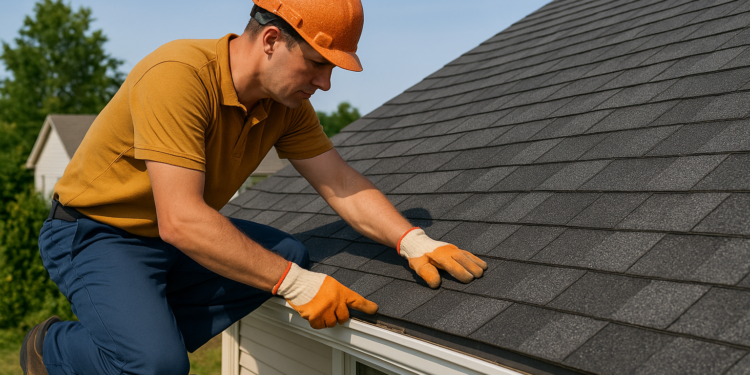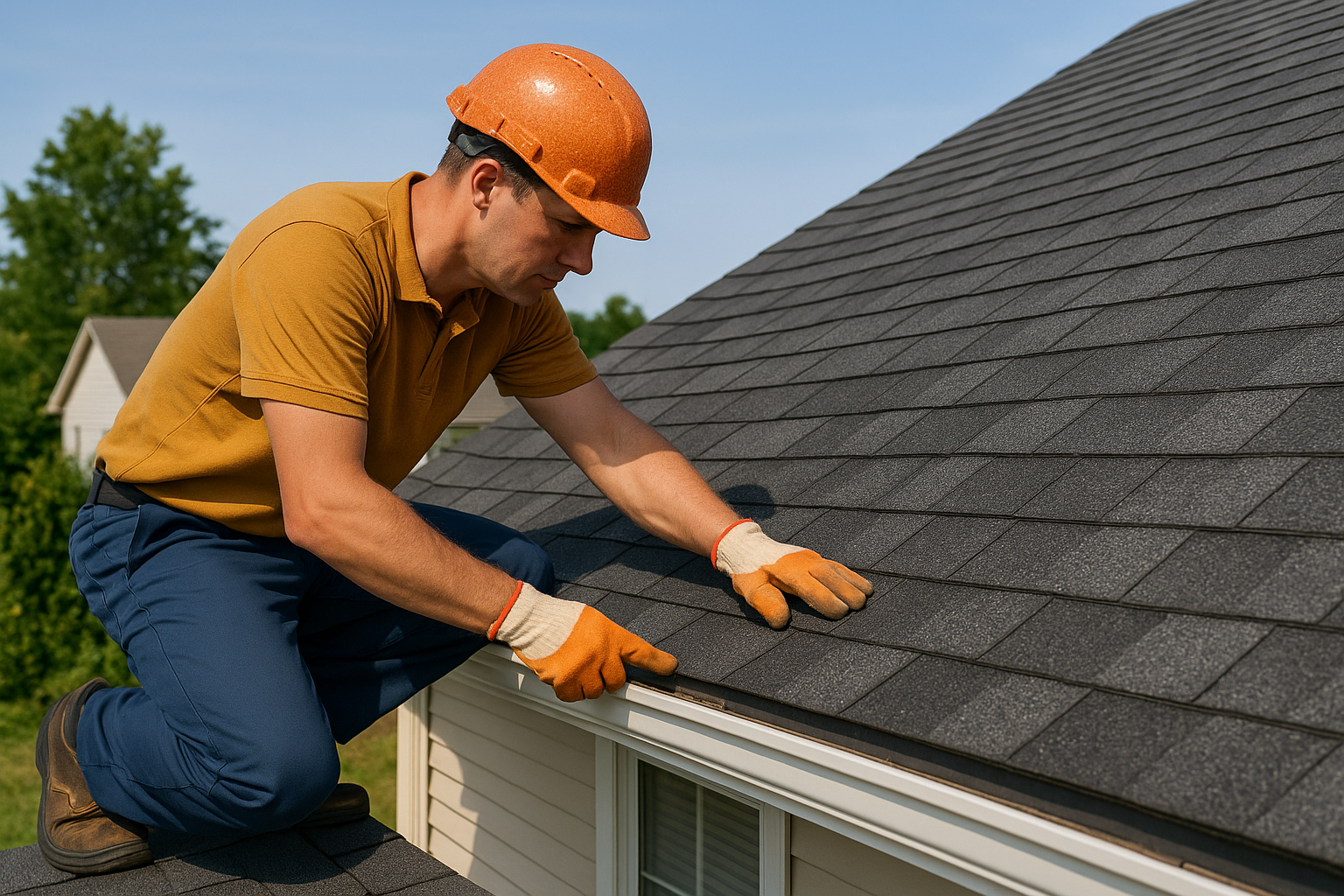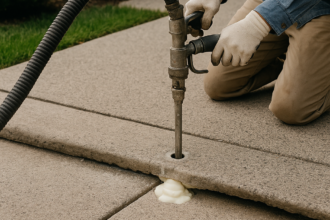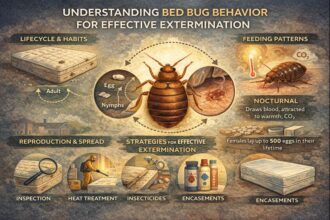Innovative Ways to Extend the Lifespan of Your Roof

Table of Contents
Why Roof Longevity Matters
Your home’s roof is a significant investment, and maximizing its lifespan brings substantial benefits. Beyond simply reducing the potentially significant costs of an early roof replacement, a well-maintained roof plays a vital role in your home’s overall well-being and comfort. A structurally sound roof protects the interior from water, pests, and extreme temperatures, avoiding costly damage and inconvenient repairs to your household. By prioritizing roof health, you uphold the energy efficiency of your entire home, as a compromised roof can allow air leaks and drive up utility bills. It also enhances property value, ensuring peace of mind and a more substantial return on investment when it’s time to sell. If you want to begin protecting your roof, consider Temple Roofing, Siding & Gutters for trusted solutions that cater to local weather conditions and roof types.
A long-lasting roof isn’t just about financial savings; it also delivers safety and stability for your household. Extending your roof’s life limits unexpected repairs that disrupt your routine and can even force occupants to leave the home temporarily during extensive fixes. Issues like leaks, mold, and water-damaged insulation can easily snowball into significant restoration projects if left unchecked. Proper roof care promotes a healthier indoor environment by keeping moisture out and blocking allergens from water intrusion. Proactive maintenance, when made a regular part of homeownership, is the best defense—helping you plan expenses, reduce emergencies, and enjoy your home with confidence for decades.
Routine Inspections: Your First Line of Defense
The foundation of roof longevity is consistent inspection. Aim to inspect your roof at least twice a year—ideally in the spring and fall—when the weather is mild and it’s easier to spot apparent damage before summer storms or winter freeze. Always perform a visual check after significant storm events, particularly if your area is prone to hail, wind, or heavy rain. Homeowners should look for cracked, curling, or missing shingles, damaged flashing around vents or chimneys, and signs of water pooling or discoloration on the roof surface. Using binoculars from the ground is often safe and sufficient for an initial check, and it avoids the risks of climbing onto a roof.
If trees surround your property, extra vigilance is essential—overhanging branches can damage shingles or drop excessive debris that traps moisture in valleys. Homes in areas affected by severe weather may need additional inspections to catch seasonal damage before it worsens. Sometimes, issues like a popped nail, a slight shingle shift, or a clogged vent pipe can be easy fixes if you see them early. Promptly fixing minor issues can mean the difference between an inexpensive repair and extensive roof or interior damage. Even if your roof seems in good condition, keeping inspection part of your routine will help you detect subtle changes or minor signs of aging that could signal larger problems down the line.

Practical Maintenance Tips for Every Homeowner
Once inspection becomes a habit, routine maintenance is the next key step. Maintaining maintenance tasks throughout the year is much easier—and less expensive—than facing a complete roof replacement. Here’s how to incorporate good roof care into your regular home routine:
- Gutter and downspout cleaning: Gutters and downspouts are your roof’s primary drainage system. Keep them flowing freely by clearing out leaves and debris at least twice yearly, in spring and autumn, and more often if nearby trees drop a lot of material. Clogged gutters force water onto your roof and under shingles, leading to rot and leaks.
- Trim tree branches: Trees look beautiful, but overhanging branches can abrade roof surfaces in the wind and deposit organic debris that holds moisture. Keep limbs trimmed back from the roof to reduce leaf buildup and minimize the risk of falling limbs causing sudden damage.
- Remove moss and algae: Moss, algae, or lichen growth can retain moisture and break down shingles, especially on north-facing slopes or shaded roofs. Use a gentle, eco-friendly cleaning solution and a soft brush to remove growth without damaging shingles. Avoid using pressure washers, which can strip protective granules and accelerate wear.
- Quick repairs: Address popped nails, cracked caulk or flashing, and minor leaks as soon as you notice them. Catching these problems early can stop water infiltration before it penetrates your attic or ceiling, preventing more severe damage and costlier repairs.
Consistent attention to these tasks means your roof can handle heavy precipitation, wind, and seasonal changes without compromise. Over time, the combined effect of small actions like gutter cleaning and prompt repairs leads to far fewer surprises and lower long-term costs. Homeowners can find additional maintenance strategies and seasonal checklists through resources such as Better Homes & Gardens roof maintenance tips. These guides provide step-by-step advice, reminders for less obvious tasks, and valuable suggestions for region-specific care to maximize the years your roof will reliably protect your investment.
Recognizing Signs of Trouble Early
Early detection of issues can mean the difference between a simple repair and an expensive, disruptive restoration. Be vigilant in looking for these warning signs:
- Water stains: Spots, discoloration, or peeling paint on interior ceilings or walls may indicate water seeping through the roof deck or attic, which often starts as a tiny leak.
- Shingle granules in gutters: If you notice a buildup of sandy granules in your gutters, especially after a significant storm, it often points to aging asphalt shingles that are losing their protective coating and may need replacement soon.
- Sagging rooflines: Visibly dipping or drooping rooflines and rafters are serious red flags, usually signaling water infiltration, rotting timbers, or structural compromise. Immediate inspection by a pro is critical in these cases.
- Moss or lichen growth: While these might seem harmless, when left unchecked, they keep your shingles damp, increasing the likelihood of rot, leaks, or pest problems.
Spotting these signs early means being able to make minor repairs—and pay much less—rather than face the steep expense that comes with widespread roof failure or interior water damage. By keeping your eyes open and knowing what to look for, you can stay one step ahead of trouble, keeping your roof strong and your home safe. The Role of Materials in Durability
Roofing materials play an outsized role in the performance and longevity of your roof. Asphalt shingles are the most common material in North America due to their balance of affordability and adequate lifespan, lasting anywhere from 15 to 30 years with good care. However, homeowners seeking maximum durability can consider metal panels, clay tiles, or natural slate; all of which may last 40–100 years or more under the right conditions. These premium materials are more costly upfront but are valued for their extreme resistance to wind, fire, and weathering.
Just as important as the material itself is the quality of installation. Even the sturdiest materials can fail prematurely if installed without proper techniques, correct underlayment, or attention to flashing and ventilation. That’s why most roofing experts recommend seeking experienced, licensed professionals—research their credentials, check their references, and ensure their installations meet manufacturer and local building code requirements. Proper installation reduces the risk of wind uplift, ice damming, and leaks, protecting your investment over the long haul and resulting in fewer headaches. Investing in both quality products and workmanship pays off with decades of reliable shelter.
Weather Prep and Protection Strategies
Mother Nature is unpredictable, but preparation can go a long way in protecting your home. Before storms, take a few minutes to visually inspect your roof for missing, loose, or damaged shingles and exposed nails, cracked flashing, or blocked gutters. When severe weather like wind, hail, or heavy rain passes through, make it a habit to follow up with another quick inspection to catch fresh issues before water leaks inside. If you live in a hurricane, tornado, or wildfire zone, consider specialized measures: reinforce with hurricane straps, use impact-resistant shingles or coatings, and install fire-resistant barriers.
Preventative weatherproofing not only safeguards your roof but also protects everything beneath it, helping avoid costly emergency calls and larger insurance claims. Small steps such as keeping gutters clear, maintaining proper attic insulation, and checking the seal around vents and skylights can significantly affect how your roof weathers the elements. For owners of historic or unique homes, the National Park Service’s Preservation Brief on Roofing for Historic Buildings offers in-depth advice for blending modern weatherproofing updates with traditional craftsmanship.
When to Call the Pros
Some roofing challenges demand specialized skill, diagnostic expertise, and professional equipment that most homeowners don’t have. If you discover persistent leaks, widespread shingle loss after storms, visible sagging, or mold and wet insulation in your attic, it’s smart to call a professional roofing contractor promptly. Experts can safely access tricky areas, identify hidden structural issues, and recommend repairs that preserve your roof’s long-term integrity. Even for diligent DIYers, a comprehensive professional inspection every three to five years offers the peace of mind knowing nothing has been missed.
Trusted local services are equipped to handle everything from minor fixes to urgent emergency response. By using qualified pros, you also maintain warranty coverage on materials and labor, ensuring your roof’s protection against defects and natural events for years to come.
Frequently Asked Questions
How often should I inspect my roof? At a minimum, perform homeowner checks twice a year (in spring and fall) and after severe weather. A professional inspection every three to five years improves the detection of subtle issues.
Does moss mean I need a new roof? Moss is a sign of moisture, but it doesn’t always require replacement. First, clean the roof gently and resolve any underlying dampness issues.
Will one leak mean roof replacement? A single, small leak often only needs a targeted repair. Persistent leaks, structural damage, or extensive wear may require replacement. For further guidance, consult credible resources like Family Handyman for homeowner-friendly decision-making.
Extending the life of a roof requires a proactive approach that combines regular inspections, timely repairs, and the use of advanced materials and technologies. By adopting innovative maintenance practices and focusing on prevention, homeowners and businesses can protect their investment, reduce long-term costs, and ensure durable performance, safety, and peace of mind for years ahead.






